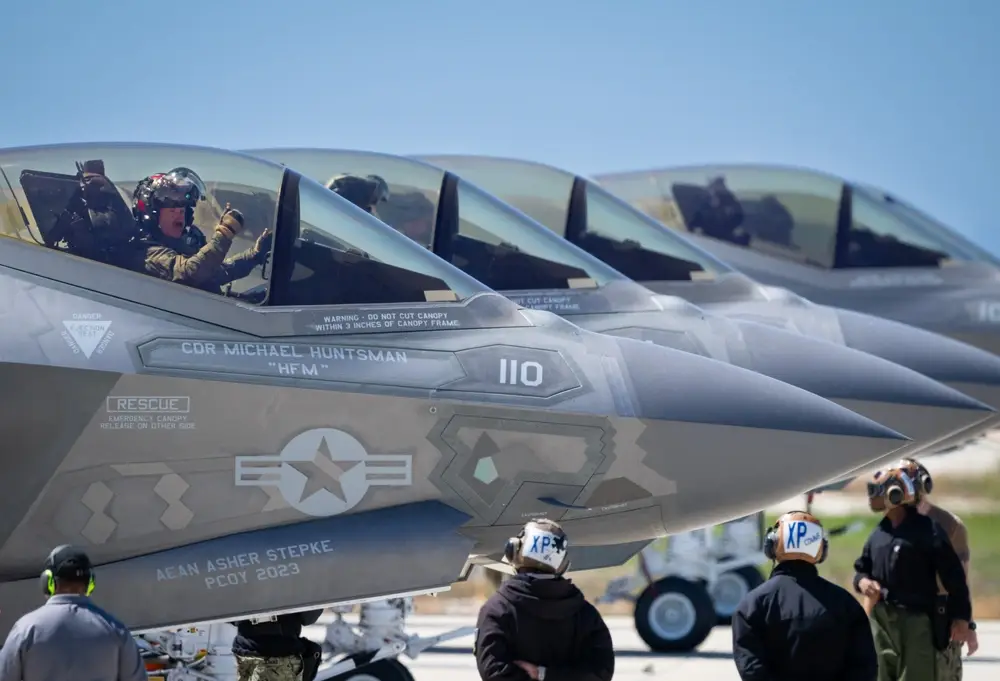
Naval Base Ventura County (NBVC) at Point Mugu will launch its annual Large Force Test Event this Friday, bringing a noticeable uptick in military aircraft over the South Coast and Channel Islands for roughly two weeks. Officials say flights typically run from about 8 a.m. to 7 p.m., with some events extending later, though usually not past 10 p.m.
The multi-service event—staged primarily from NBVC Point Mugu with activities over the Point Mugu Sea Range—pulls together aircraft, ships and unmanned systems to evaluate tactics and new capabilities in a realistic maritime environment. Last year’s iteration involved units from the Navy, Marine Corps, Army and Air Force, with more than 3,000 personnel participating, according to base officials. The Sea Range offers about 36,000 square miles of controlled air and sea space for complex scenarios.
NBVC has advised residents in Camarillo, Oxnard and surrounding Ventura County communities to expect increased jet noise and flight operations during peak periods while the test window is open. The base’s public notices emphasize that the schedule centers on regular airfield hours, but extended hours may be required on select days to meet test objectives.
What this test is
- Purpose: Large-force test events knit together multiple platforms (fighters, electronic warfare aircraft, airborne early warning, tankers, surface vessels, and UAS) to validate systems and refine joint tactics in a contested, multi-domain setting. (NBVC/NAWCWD materials describe this annual event as part of their broader mission on the Point Mugu Sea Range.)
- Heritage: The Navy has highlighted related “Gray Flag” large-force test campaigns at Point Mugu, integrating joint and allied participants to trial interoperability in the maritime battlespace.
What residents should know
- When to expect noise: Mostly daytime, roughly 8 a.m.–7 p.m., with occasional later events if required.
- Where you’ll notice it: Communities near NBVC Point Mugu/Port Hueneme and along flight paths to the Sea Range (coastline and offshore) are most likely to hear and see activity.
- Duration: About two weeks starting Friday.
- Mariners/boaters: Expect routine safety notices and temporary range restrictions offshore during live test windows associated with the Sea Range. (Point Mugu Sea Range operations occur in designated offshore boxes; check current Notices to Mariners/USCG broadcasts before getting underway.)
Why it matters
Point Mugu’s Sea Range is one of the Navy’s premier venues for joint test and evaluation, enabling the services to stress-test sensors, weapons, networks and tactics at scale—work that ultimately feeds upgrades to fleet readiness and survivability.
Monitoring Guide: Large Force Test 2025
VHF / UHF Air Traffic Control
- Los Angeles Center (ZLA): Expect heavy coordination as aircraft enter/exit the Point Mugu Sea Range. Key frequencies include:
- 125.8 / 133.55 MHz – Sector frequencies covering Ventura County approaches.
- SoCal Approach / Departure:
- 124.7 MHz (Camarillo / Point Mugu arrivals & departures)
- 120.4 MHz (Los Angeles Basin handoffs)
Military Airband (UHF)
- NBVC Point Mugu Tower: 340.2 MHz
- NBVC Ground: 121.8 MHz / 275.8 MHz
- NBVC ATIS: 270.4 MHz
- Oceana / Exercise Ops (Sea Range Control): 305.9 MHz, 323.0 MHz, 377.1 MHz (common range and ops freqs used in past tests)
Air-to-Air / Tactical
- Fighter packages often use discrete AM UHF frequencies between 225–400 MHz. Keep banks open for:
- 233.7 MHz, 259.9 MHz, 267.5 MHz, 292.3 MHz, 303.0 MHz (all reported in prior Point Mugu exercises)
- Expect “push” instructions to secondary channels mid-mission. Scan wide.
Refueling Ops
- AR Tracks off SoCal coast: KC-135/KC-10 tankers typically coordinate on:
- 238.9 MHz, 343.8 MHz, and 353.7 MHz (AR primary freqs).
- Listen for “Texaco” or “Shell” call signs.
Range Safety & Control
- Sea Range Ops (Point Mugu): 291.6 MHz, 315.85 MHz.
- Maritime patrol / range safety vessels sometimes heard on VHF Marine Ch. 16 (156.8 MHz) coordinating with control.
Call Signs to Watch For
- Navy: “Viking,” “Blackbird,” “Ranger,” “Knight” (VX-9, VX-30, test squadrons)
- Air Force: “Dagger,” “Lobo,” “Banshee” (common exercise package IDs)
- Tankers: “Texaco,” “Shell,” “Esso”
- Range Control: “Sea Range,” “Condor,” “Control”
⚠️ Tip for SCMA Members: Have your scanner or SDR set to search between 225–400 MHz AM, as many tactical channels will be pop-up/discreet and not always published. Logging software (ProScan, SDRTrunk, etc.) will help identify new freqs.
Some military aircraft may be tracked in real time on ADS-B Exchange and similar websites.
